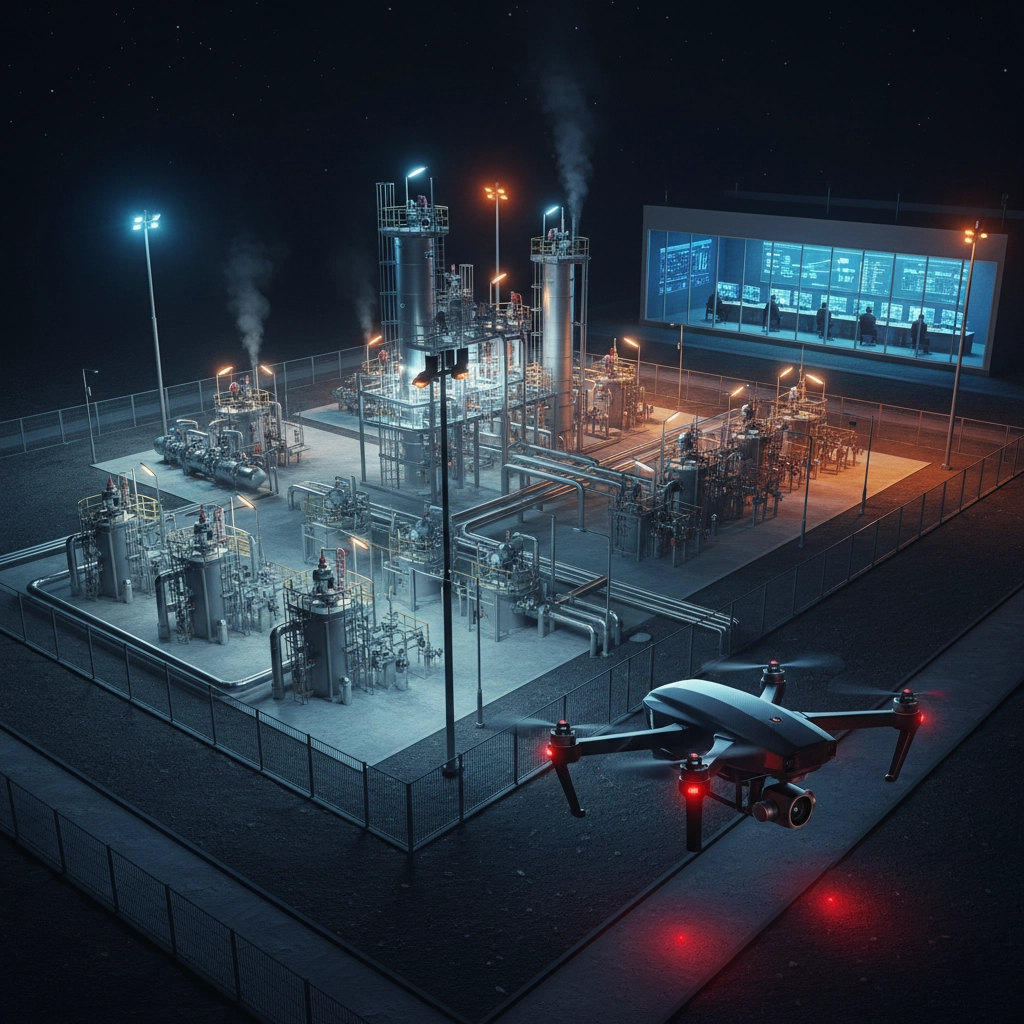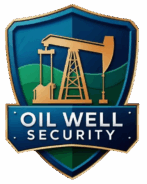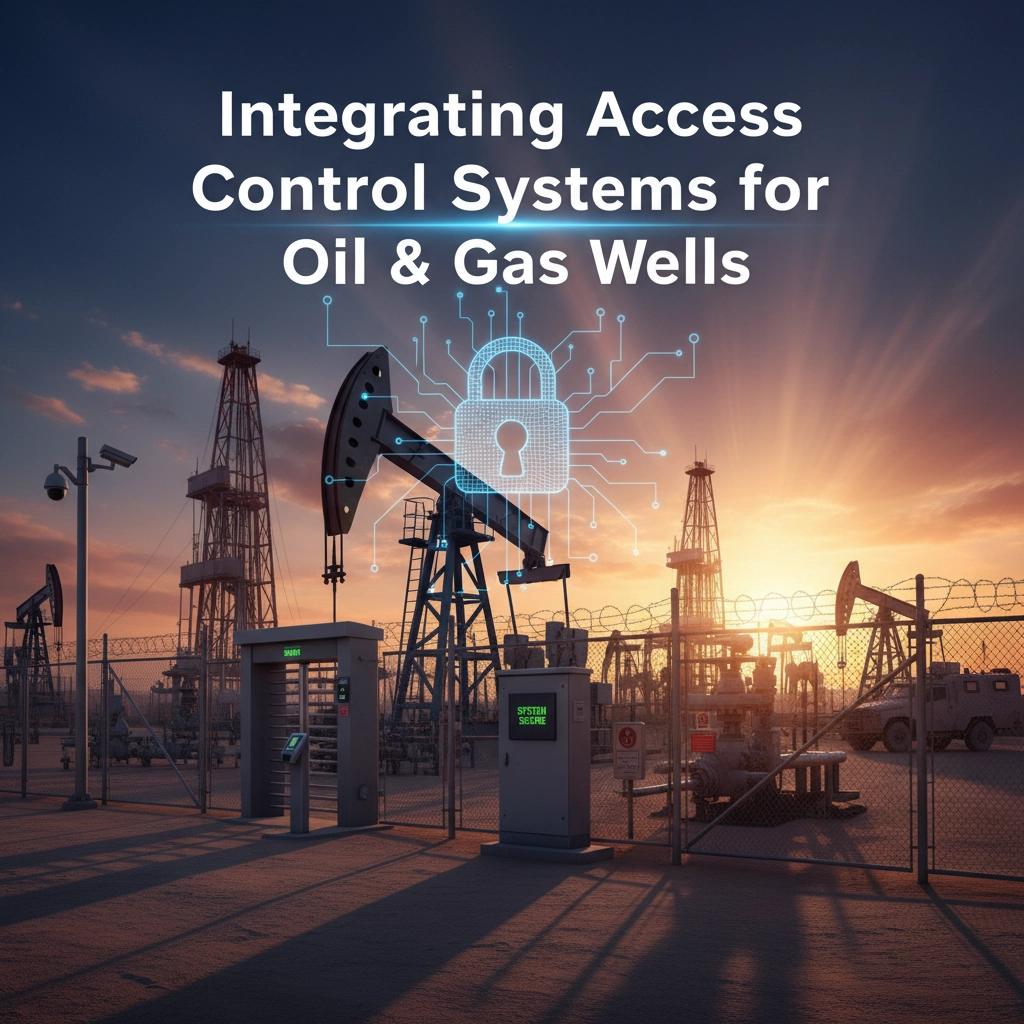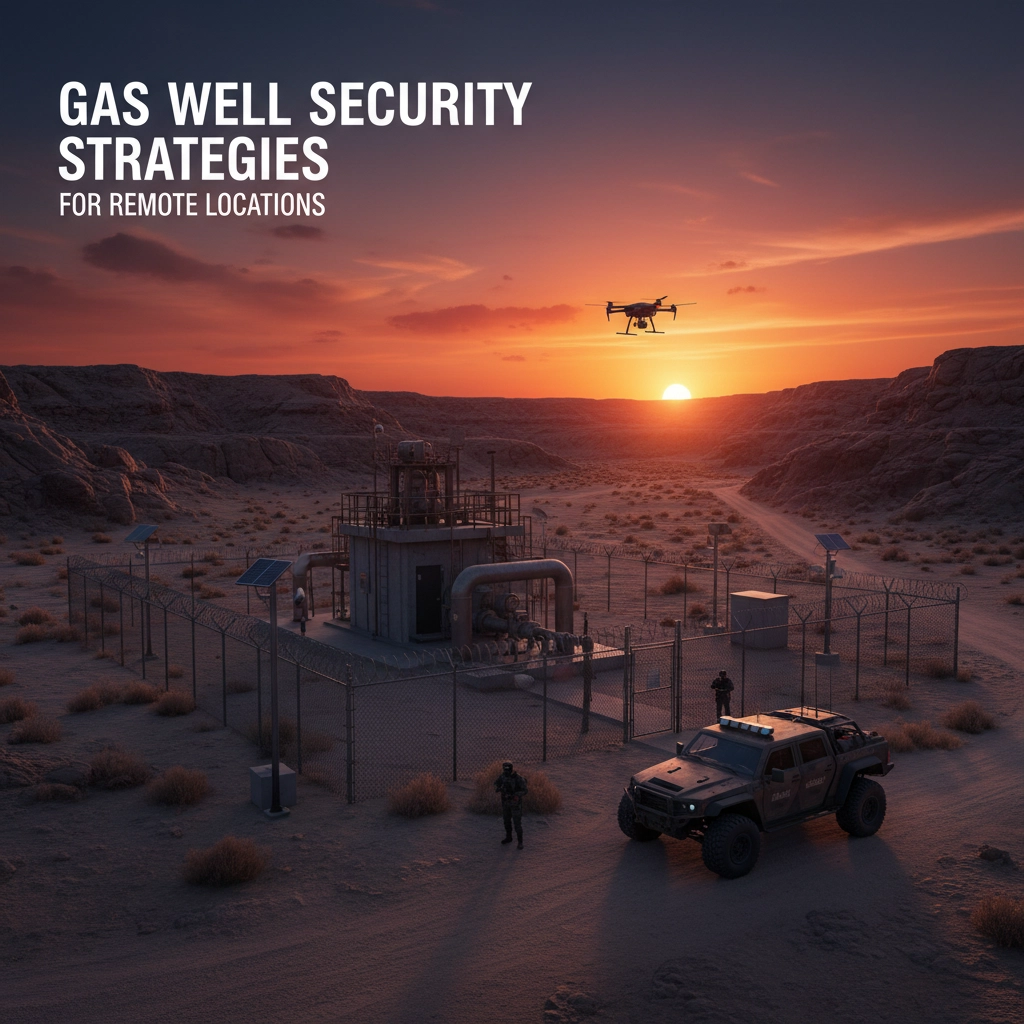If you're stepping into the world of gas well security for the first time, you're entering a field where traditional protection meets cutting-edge technology. The threats facing your energy infrastructure have evolved dramatically, and your security approach must evolve with them. This guide will walk you through the essential elements you need to understand for protecting gas wells in 2025.
Understanding Modern Gas Well Security Threats
Your gas wells face a complex array of threats that didn't exist a decade ago. Today's criminals combine cyber attacks with physical intrusions, creating hybrid threats that can disable your safety systems while exploiting physical vulnerabilities simultaneously. You're not just protecting against vandalism or theft anymore: you're defending against sophisticated actors who understand both your digital systems and physical infrastructure.
The reality is stark: many energy facilities still operate with basic security gaps. If your perimeter surveillance has blind spots or your entryways lack proper access controls, you're leaving your operation vulnerable to both opportunistic criminals and organized threats.

Building Your Integrated Security Foundation
Start by thinking of your security as one unified system rather than separate physical and digital components. Your surveillance cameras should feed data to the same platform that monitors your network traffic. When your perimeter sensors detect movement, that information should automatically correlate with cybersecurity logs to identify potential coordinated attacks.
This integrated approach transforms your security from reactive to proactive. Instead of responding to incidents after they happen, you'll detect patterns and anomalies that signal threats before they fully develop. Your security team gains the ability to see the complete picture of what's happening across your entire operation.
Create a central monitoring hub where all your security data converges. This becomes your command center for coordinating responses and maintaining situational awareness across both physical and digital domains.
Essential Physical Security Measures
Strengthen Your Perimeter Defense
Your first line of defense begins at your property boundaries. Install high-resolution cameras at strategic points, ensuring complete coverage of vulnerable areas like storage facilities and equipment access points. Eliminate dark spots with motion-activated LED lighting systems that conserve energy while maintaining security readiness.
Position sensors along your perimeter that automatically alert both your security personnel and local law enforcement when breaches occur. These systems should integrate with your central monitoring platform for immediate threat correlation.
Implement Advanced Access Control
Deploy biometric authentication systems for all sensitive areas. Your access control should go beyond simple key cards: use fingerprint or facial recognition technology that creates audit trails for every entry and exit. Configure these systems to immediately alert security personnel when unauthorized access attempts occur.
Regular testing of your access control systems ensures they perform reliably in harsh conditions common to energy facilities. Schedule monthly maintenance checks and quarterly system updates to maintain peak performance.

Deploy Autonomous Surveillance
Incorporate drone surveillance and robotic patrol systems that continuously monitor your rig perimeters. These autonomous systems provide 24/7 coverage without the limitations of human patrols, detecting unauthorized activity in real-time regardless of weather conditions or time of day.
Anti-drone mechanisms protect your facilities from aerial intrusions while your own surveillance drones maintain protective overwatch. This layered approach creates multiple detection points that make it nearly impossible for threats to approach undetected.
Cybersecurity Essentials for Gas Wells
Secure your digital infrastructure with enterprise-grade firewalls and intrusion detection systems that monitor all network traffic for suspicious activity. Implement network segmentation to prevent security breaches from spreading throughout your facilities if one system becomes compromised.
Encrypt all communications between systems and with external partners. This protects sensitive operational data and security information from interception during transmission. Your encrypted communications should include backup channels that maintain connectivity during primary system failures.
Schedule regular penetration testing to identify vulnerabilities before criminals exploit them. These simulated attacks reveal weaknesses in both your technical systems and response procedures, allowing you to strengthen defenses proactively.
Keep all systems current with the latest security updates and patches. Establish automated update schedules for non-critical systems and managed update windows for operational systems to address new vulnerabilities as they emerge.

Navigating Regulatory Requirements
Ensure your security measures comply with International Maritime Organization cybersecurity guidelines and NIST Cybersecurity standards. These frameworks establish mandatory security measures that prevent penalties and protect your operational licenses.
Meet API RP 1173 pipeline safety requirements and API RP 754 process safety standards. These certifications demonstrate your commitment to industry best practices while ensuring regulatory compliance across all operational areas.
Conduct regular compliance audits and maintain detailed incident reporting procedures. Your documentation should demonstrate ongoing adherence to all applicable standards while providing clear evidence of security effectiveness.
Implementing Threat Detection and Response
Deploy advanced analytics systems that recognize threat patterns before they escalate into incidents. These systems analyze data from all your security sensors, identifying anomalies that human operators might miss during routine monitoring.
Conduct comprehensive risk assessments that evaluate your assets' vulnerability to both natural disasters and human threats. Focus your protection resources on the most critical and vulnerable infrastructure components based on consequence analysis and threat likelihood.
Your threat detection should operate continuously, providing 24/7 monitoring even at unmanned locations where static security measures often fail. Automated systems maintain vigilance when human presence isn't practical or cost-effective.
Building Resilience and Recovery Capabilities
Develop redundant systems and fail-safes that maintain security even when primary systems experience failures. Your backup systems should activate automatically without requiring manual intervention during crisis situations.
Create comprehensive disaster recovery procedures that minimize downtime when incidents occur. Regular drills and simulations prepare your personnel for real-world scenarios, ensuring they can execute recovery procedures effectively under pressure.
Build partnerships with local law enforcement and emergency responders who understand your facility layout and security systems. These relationships ensure rapid, coordinated responses when incidents require external assistance.

Avoiding Common Security Mistakes
Don't rely on outdated security assumptions that treat physical and cyber threats as separate issues. Modern attackers coordinate their efforts across both domains, requiring integrated defensive strategies that address hybrid threats effectively.
Avoid the temptation to implement security measures piecemeal. Your security system's effectiveness depends on all components working together seamlessly. A comprehensive approach prevents gaps that criminals can exploit.
Never assume that remote locations are inherently safer. Isolated facilities often attract criminal attention precisely because they appear less protected. Ensure your remote operations receive the same security attention as your primary facilities.
Taking Action on Your Security
Start by conducting a comprehensive security assessment of your current capabilities. Identify gaps in both your physical defenses and cybersecurity measures, then prioritize improvements based on risk levels and regulatory requirements.
Engage with security professionals who understand the unique challenges of energy infrastructure protection. Their expertise helps you avoid costly mistakes while implementing proven security strategies tailored to your specific operational needs.
Remember that security is an ongoing process, not a one-time implementation. Schedule regular reviews and updates to ensure your defenses evolve with emerging threats and changing operational requirements.
Your gas well security investment protects more than physical assets: it safeguards your operational continuity, regulatory compliance, and business reputation. By implementing these fundamental security measures, you create a robust defense system that adapts to the evolving threat landscape of 2025.
For expert guidance on implementing comprehensive gas well security solutions tailored to your operation, contact Oil Well Security at info@oilwellsecurity.com or call (970) 465-2525. Our team provides professional security consulting and implementation services for energy infrastructure protection.



